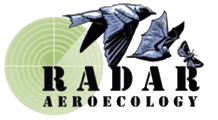Read Our Recent Publications |
Migratory movements reflect an animal’s need to eat, breed, avoid predators and find a tolerable physiological environment over the short term. These movements are also shaped by an animal's evolutionary history, during which natural selection has resulted in behaviors that maximize fitness in complex and changing environments. Because migration behavior is labile, it contains information about the integrated organism’s response to recent changes in the environment. These properties make migration behavior an ideal metric for understanding organismal responses to changing environments over large spatial extents (e.g., climate change and land use change).
Because tracking animal movement is central to answering so many questions in animal biology, the past century has seen constant innovation in tracking methods. This innovation, like most technology driven fields, has become very rapid and multi-disciplinary over the past decade.
We are foucused on answering five basic questions that drive technological innovation:
- What are the determinants of behavioral plasticity in migrants and what are the constraints on behavioral adaptation?
- What are the determinants of individual fitness?
- What are the drivers of population dynamics in migratory animals?
- What is the impact of environmental change on migratory life histories. In particular, what are the effects of land use and climate change?
- What is the role of disease transmission in the life of migrant animals?


